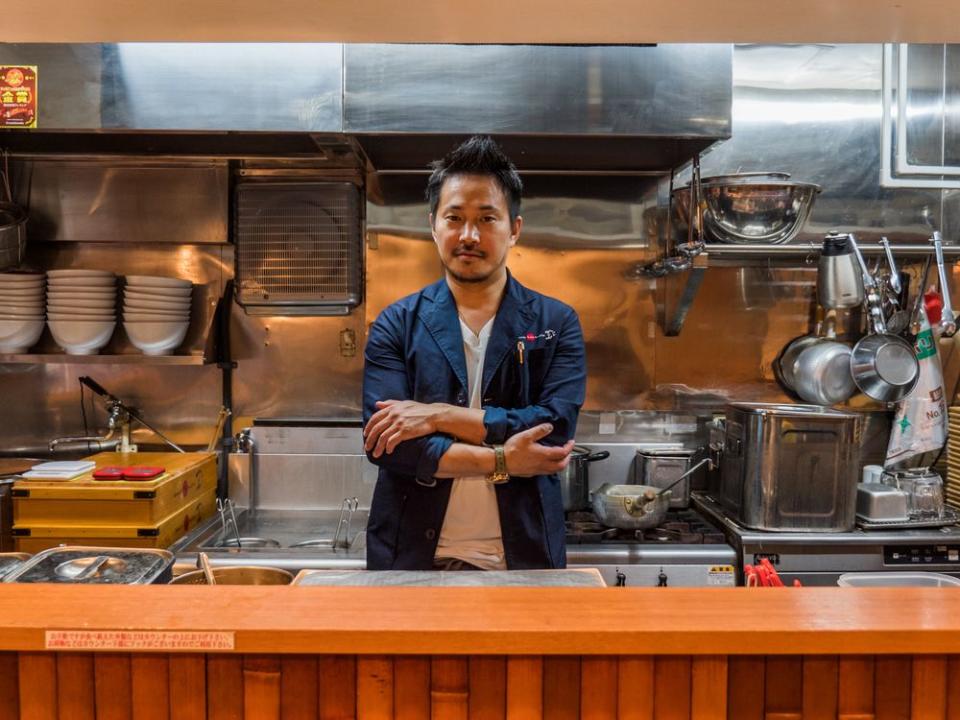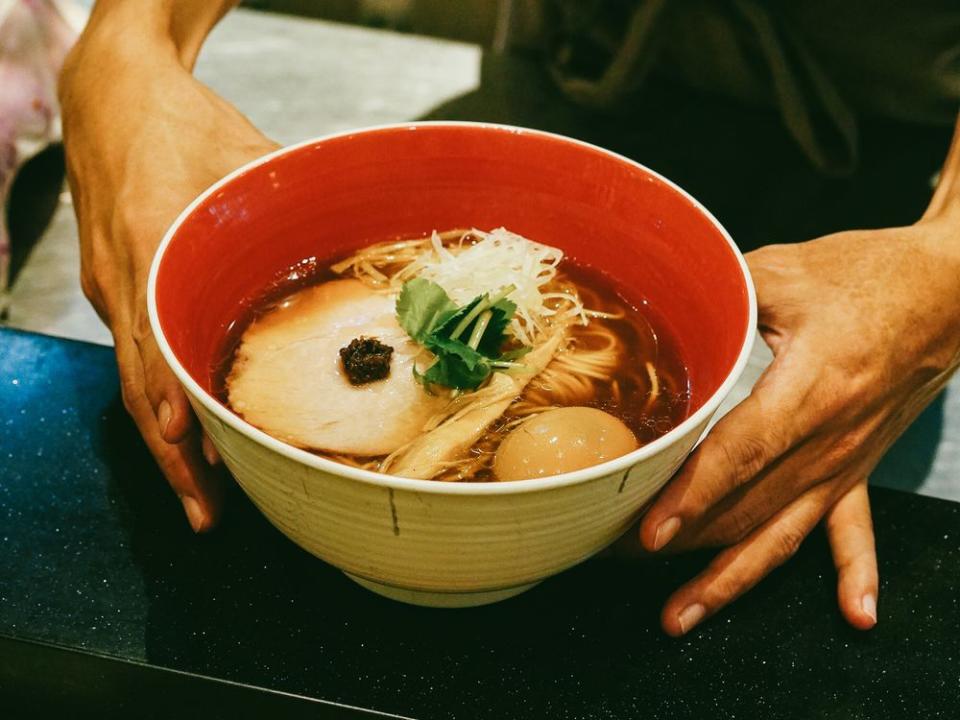The World’s First Michelin-Starred Ramen Shop Just Opened in the U.S.
Tokyo is a noodle lover’s dream. In 2017, the city was home to no less than 3,200 ramen shops, each offering its own nuanced take on what began as a humble Chinese dish and eventually achieved Michelin-level status. Tokyo’s Tsuta, founded by chef Yuki Onishi in 2012, is the only ramenten to have ever received a Michelin star—not just in Tokyo, but anywhere in the world. Since receiving its star in 2015, Tsuta has expanded to places like Singapore and Hong Kong, but it’s only as of this week that the chef has added an American location to his roaster, planting his first U.S. shop in San Francisco's Metreon shopping mall.
Claiming a modest plot in Tokyo’s Sugamo neighborhood, offering just nine counter seats, Onishi—who comes from a family of ramen chefs—has earned a reputation for his umami-rich shoyu soba: a soy sauce-based broth (made from a blend of housemade and non-housemade soy sauces, some of which are aged for two years) that builds depth of flavor through chicken, clams, and other seafood. His noodle of choice: soba.
It's worthwhile to note that in this context, soba doesn’t refer to the buckwheat noodles we call soba in the U.S., but rather a thinner-style noodle that Onishi makes in-house from a mix of four wheat flours. (Ramen was once called "chuka soba," which translates to Chinese noodles, and some shops still call their wheat noodles "soba.")

And while his soy sauce ramen serves as a signature dish, Onishi is also well-known for his limited-run ramens, which change every season. Think lobster and tonkotsu (rich pork broth), and cold tomato cream tsukemen (dip ramen).
Over in San Francisco, Tsuta manifests as a far more spacious affair, with seating for 50 spread between 2,400 square feet, and a menu of best hits. While in Tokyo, Onishi limits his production to 150 ramen bowls per day, in California he’s offering as many as desired. Of course, his shoyu soba will grace the menu, in addition to another favorite: truffle oil soba that’s made with a truffle oil imported from France. Beyond soup, expect common Japanese small plates, or zensai, like edamame and fried chicken, plus a few rice options topped with either roasted pork and butter sauce, or charred pork and onion sauce. In the future, Onishi plans to add a dish inspired by San Francisco.

As it turns out, Onishi was Tokyo’s first ramen chef to use black truffle oil, porcini oil, and chicken fat oil in a soup, says noted ramen enthusiast John Hirai, adding that many ramen chefs have since copied him. Hirai, who has dined at over 2,000 ramen shops in Japan, stresses that while diners often believe that ramen is all about broth, “it’s actually the tare” (or base from which the broth is made) that makes a ramen special. Tsuta included. “All ramen shokunins will tell you what they use for the broth, but never for tare,” says Hirai.
Today, when dining out in Tokyo, ramen is probably the best bang for your buck, considering that a bowl typically costs less than ¥800 (around $7) and can take a chef days to prepare, depending on the soup style (ramen broth can simmer for a few hours, or longer a day).

In comparison, Tsuta’s ramen begins at around ¥1100 ($10), while in San Francisco the price for all ramen—shoyu, miso, shio—is $12 (unless you add extra toppings). In the U.S., it feels like a deal to score a Michelin-caliber meal for under $15. But in Japan, Onishi “is probably the only guy who can charge over ¥1000 because of his star,” admits Hirai.
Despite the profusion of ramen shops both in San Francisco and the States as a whole, Michelin accreditation is sure to help Tsuta gain American fans. But at the end of the day, if a ramenten in Japan—arguably the most perfectionist-driven culinary country in the world—can soar above thousands of competitors, command lengthy lines, and sell out of soup every single day, it’s sure to be a success here.
Note: A previous version of this article misstated that it is the only Michelin-starred ramen restaurant in the world. While it used to be the only, there are now two other ramen restaurants with stars in Tokyo.

